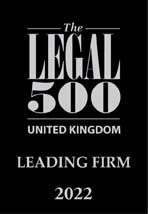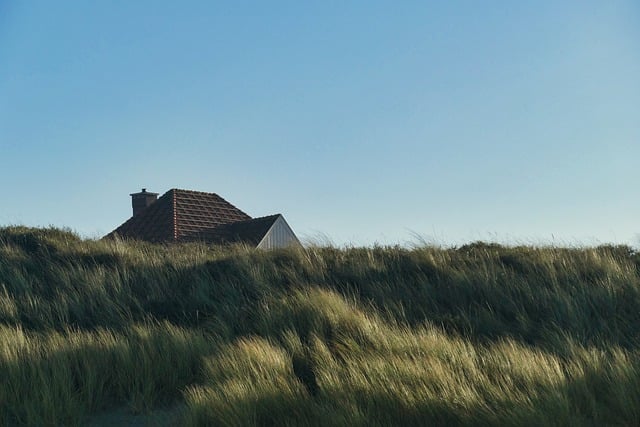The concept of “right to light” might sound unfamiliar, but if you’re a property owner in England or Wales, it could be highly relevant to you. Right to light is a common law right, protected under English property law, which allows property owners to receive natural light through windows or openings on their property. However, issues can arise when a neighbouring development threatens to block that natural light. The “50/50 rule” often comes up in these situations, guiding how much obstruction is deemed acceptable before your right to light is considered infringed.
At Blackstone Solicitors, we specialise in helping clients understand their property rights, including right to light issues. This article will explain what the right to light is, how the 50/50 rule works, and what steps you can take if you believe your right to light is being compromised.
Free Initial Telephone Discussion
For a free initial discussion with a member of our New Enquiries Team, get in touch with us today. We are experienced in dealing with all the aspects of construction law and Property Litigation, and once instructed, we will review your situation and discuss the options open to you in a clear and approachable manner. Early expert legal assistance can help ensure you are on the best possible footing from the start and also avoid the stress of dealing with these issues on your own. Simply call us on 0345 901 0445 or click here to make a free enquiry and a member of the team will get back to you.
What is the Right to Light?
The right to light is an easement—a property right that allows a property owner to benefit from natural light reaching their building. This right generally applies to windows or openings that have enjoyed uninterrupted light for at least 20 years. If a neighbouring development blocks this light, you may have grounds to challenge the development.
However, the right to light isn’t absolute. The law recognises that reasonable development should be allowed to continue, especially in urban areas. Therefore, guidelines and measurements exist to determine how much light a property should receive before its right to light is considered infringed.
How the Right to Light is Measured
When determining whether a property’s right to light has been compromised, surveyors use a method called the “Waldram method,” named after Percy Waldram, a surveyor who developed it in the 1920s. This approach calculates the amount of daylight that reaches a property and identifies any reduction caused by an obstruction.
The 50/50 rule is a practical guideline used in right to light assessments. It suggests that a right to light is infringed if more than 50% of a room receives less than 0.2% of natural daylight after a new structure is erected. This figure, 0.2% sky factor, is considered the minimum level of daylight needed for most activities, such as reading or working, without artificial lighting.
Understanding the 50/50 Rule in Practice
The 50/50 rule is a simplified way of determining whether a new building or extension is likely to infringe on your right to light. Here’s a basic outline of how it works:
- Assessing the Room: Each room in your property that benefits from natural light is individually assessed. Typically, living rooms, kitchens, and bedrooms are prioritised, as they are considered the primary habitable spaces.
- Calculating the Sky Factor: Surveyors measure the amount of light reaching different parts of the room by calculating the “sky factor.” This represents the percentage of sky visible from the mid-point of a window, and therefore how much light is able to pass through.
- Applying the 50/50 Rule: If more than 50% of the room receives less than the 0.2% sky factor after the neighbouring development is constructed, your right to light may be deemed to have been infringed.
For example, if you own a flat with large windows in the living room, and a new development is erected next door, surveyors would calculate the sky factor for the living room area. If more than half of this room falls below the 0.2% sky factor due to the new development, you may be able to make a claim that your right to light has been infringed.
Why the 50/50 Rule is Used
The 50/50 rule helps establish a fair balance between property owners’ rights to enjoy natural light and developers’ rights to carry out reasonable development. In densely populated areas, particularly in cities, it’s common for new developments to affect the amount of daylight that nearby properties receive. The 50/50 rule serves as a guideline, offering a clear benchmark to determine when a right to light has been compromised.
However, it’s essential to understand that this rule is only a guideline and not a strict legal requirement. Courts can interpret right to light cases based on various factors, including the specific details of the property and any evidence presented by both parties.
What Can You Do if Your Right to Light is Compromised?
If you believe your right to light is being affected by a neighbouring development, there are several steps you can take to protect your rights:
- Seek Professional Advice
The first step is to consult with a specialist surveyor who is experienced in right to light assessments. A surveyor can conduct a detailed analysis using the Waldram method and apply the 50/50 rule to determine whether your right to light is likely to be infringed.
It’s also advisable to consult with a solicitor specialising in property law, such as Blackstone Solicitors. We can provide you with guidance on the legal steps involved and advise on the likelihood of a successful claim.
- Negotiate with the Developer
In many cases, right to light disputes can be resolved through negotiation. If your surveyor finds that the development will reduce your light beyond the 50/50 rule threshold, your solicitor can approach the developer to discuss potential solutions.
Developers may agree to modify the plans, such as reducing the height of the building or altering the design to minimise the impact on your light. They may also offer compensation as an alternative if they are unable to adjust the design.
- Consider Mediation or Arbitration
If negotiations are unsuccessful, mediation or arbitration can offer a structured way to resolve the dispute without going to court. These alternative dispute resolution methods allow both parties to discuss the issues with the assistance of a neutral third party. Mediation and arbitration are often quicker and less costly than court proceedings.
- Proceed with a Legal Claim
If all other methods fail, you may decide to pursue a legal claim in court. Under English law, if you can prove that the development has infringed on your right to light, you may be entitled to an injunction (an order to halt or modify the construction) or financial compensation.
Injunctions are not granted lightly, especially in urban areas, as courts recognise the need for development. However, if a right to light infringement is substantial, an injunction can be awarded, forcing the developer to amend their plans. In many cases, financial compensation is the more likely outcome.
How Courts View Right to Light Cases
Courts generally take a balanced approach when considering right to light cases. They recognise the need to protect property owners’ rights, but they also acknowledge that urban areas require development to grow and improve. As a result, courts may not grant an injunction if the infringement is minimal or if financial compensation is deemed a reasonable solution.
Additionally, there is a principle known as “de minimis,” which means that minor infringements on the right to light are often not recognised as legally actionable. The 50/50 rule serves as a practical boundary, but even if this threshold is met, the court may still look at factors such as the size of the property, the type of room affected, and the broader public interest.
Conclusion
Understanding the right to light and the 50/50 rule can be crucial if you’re facing a neighbouring development that may affect your property. By seeking professional guidance from surveyors and solicitors, you can assess whether your right to light has been compromised and explore the most appropriate course of action.
At Blackstone Solicitors, we have extensive experience in right to light matters across England and Wales. Our team can help you navigate the complexities of the law, negotiate with developers, and, if necessary, represent you in court. Whether you’re concerned about losing natural light or need advice on a right to light dispute, we’re here to ensure your rights are protected.
How we can help
We have a proven track record of helping clients deal with construction law and property litigation. We will guide you diligently and ensure all checks are carried out swiftly and efficiently and we firmly believe that with the right solicitors by your side, the entire process will seem more manageable and far less daunting. You can read more about the range of construction law and property litigation services we offer by clicking here: https://blackstonesolicitorsltd.co.uk/construction-solicitors/
How to Contact Our Property Litigation Solicitors
It is important for you to be well informed about the issues and possible implications of a property dispute. However, expert legal support is crucial in terms of ensuring a positive outcome to your case.
To speak to our Property Litigation solicitors today, simply call us on 0345 901 0445, or click here to make a free enquiry. We are well known across the country and can assist wherever you are based. We also have offices based in Cheshire and London.
Disclaimer: This article provides general information only and does not constitute legal advice on any individual circumstances.



